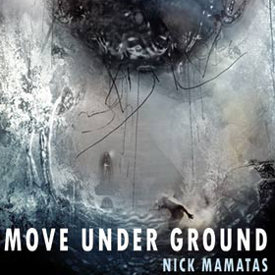
OBIR: Occasional Biased and Ignorant Reviews reflecting this reader’s opinion.

The Centaur’s Wife – by Amanda Leduc
Publisher: Penguin Random House Canada, 2021.
Cover Art by Emma Dolan.
Premise:
The technological infrastructure of civilization is destroyed in a natural catastrophe. Yet the war with nature continues.
Review:
This is a novel about survival.
Back in the day, say when I was a young lad in the late ‘50s and early ‘60s, a novel dealing with catastrophe would be fairly straightforward. A community would be panic-stricken and stunned during the event. Survivors would crawl out of the ruins and come together in search of help. Local leaders would emerge. Logical decisions would be made. A genuine community spirit would stabilise the situation, though not to the satisfaction of all. Frustrated, some might strike out on their own and disappear. Others, for petty, selfish reasons, might cheat, steal, or otherwise betray the community and wind up being expelled. There may or may not be monsters tromping about as a continuing threat. Perhaps the monsters are human. Possibly one or more survivors are killed. But in the end, either help arrives from abroad, or the locals establish the beginnings of a stable community with a future. The novel ends on a note of hope… usually.
Most of the above takes place in The Centaur’s Wife. Not unexpected, since a massive swarm of smallish meteorites wipes out most buildings and physical structures like bridges world-wide but without triggering an extinction event. The climate isn’t altered. There’s no nuclear winter. Nature, outside the realm of man, thrives.
In other words, the destruction is symbolic rather than realistic. This novel is not meant to be read as a sort of manual predicting how people would cope with physical disaster. In fact this particular catastrophe, a bizarrely-structured meteor shower, is irrelevant to the true premise of the book. Any cancellation of humanity’s collective power over nature would do.
I would go so far as to say the book could have been written without reference to any disaster other than the universal catastrophe we all face on a daily basis in struggling to cope with being alive.
Like I said, this is a novel about survival. It’s about Heather, a city girl who has been a social outcast all her life. Physically, as a handicapped individual with one leg shorter than the other, a person who walks with a limp, she was bullied by other kids for not being normal like them and therefore a worthy, perpetual target, always good for a laugh when knocked down. Growing into young adulthood proved no salvation. Not even marrying and producing two children gave her the right to be included. She is still shunned. It all has to do with those damned siblings of hers.
You see, her mother’s first marriage was to a were-stallion. Not a problem initially, since he left his horse-nature on the mountain overlooking the city and moved among humans as a handsome man. Unfortunately, the triplets she gave birth to were Centaurs, and they and their father were driven out of the city and forbidden to return. All well and good, except that any inhabitant of the city venturing up the mountain promptly disappeared. Perhaps the Centaurs or other types of monster were responsible. Decent people, sensible people, never went near the mountain. It doesn’t help that Heather, in her loneliness, goes for long walks at the base of the mountain. The trees and flowers seem happy to see her. She’s more comfortable there than among her fellow citizens.
Heather is but half-sister to her Centaur siblings. She had a different father, who used to take her on her earliest visits to the lower slopes of the mountain. Unfortunately he fell to his death, or was murdered by a monster, depending on whom you believe, and the reputation of the mountain, monsters and murder and raw evil, hangs like a cloak of doom over Heather’s reputation. People shun her. They’re not sure if they should, but feel it better to err on the side of caution.
Perhaps she is a monster. Her two young children, Geta and Jill, are not objects of her affection. Nor is her well-meaning but perpetually confused husband Brendon. Nor even her mother. Heather is remote from them all. But then, Heather is trying to survive her crushing sense of rejection and the endless hostile scrutiny of seemingly everyone in the community. Thoughts of suicide are never far away.
One of the features of this novel are original animal fables inserted here and there which presumably bear on Heather’s situation. For instance, in one a female fox desperate to have children repeatedly asks Earth to grant her such, but all that appears are clusters of worms writhing out of the soil. Not until this happens a third time does the female fox realize the worms are her children and she is now a mother. She accepts her lot and tenderly looks after the worms.
Does Heather think of her children as mere worms? Something, an obligation, she’s saddled with and has to put up with, but feels no emotional motivation to do so? Does she think of herself as her mother’s worm? A useless, ugly squirming thing, unloved and unwanted? In a sense Heather is too remote, too emotionally dulled, to answer these questions. She feels apart, but there is no alternative place of being to belong to. She is adrift.
Heather’s internalized conflict is the real struggle for survival that is the premise of the book. The meteor shower and consequences is incidental backdrop.
Yet, like any good novel, the essential struggle is mirrored on multiple levels. The mountain is the source of life for all who dwell upon it, but not only does it hate the humans below who have wrought so much damage to living things, it hates the were-stallion who abandoned it to live among humans. The mountain is as capricious as nature itself. It is no more a refuge than any other place anywhere on the planet.
Heather isn’t the only character in the book. The reader often experiences the viewpoints of numerous secondary characters. However, even Tasha, the rocksteady Doctor from outside the community who takes charge and keeps everyone alive as they face the future together, is far from being as placid and reliable as she appears. More emotionally alive than Heather, she is full of self-doubt and sometimes rage. Indeed, suppressed rage is quite common. Though everyone cooperates (most of the time) and pledges belief that someday help will come and everything will turn out all right, all of the survivors are full to bursting with fear and anger and frustration. The more they succeed in preparing for the future the greater their internal turmoil. It is a volatile situation and growing worse by the day.
No wonder, since even the trees and vines and flowers slowly encroaching on the ruins are in league with the mountain.
As for the Centaurs, who have multiplied (not thru sex exactly), they are for the most part indifferent to Humanity’s plight, but not Heather’s half-brother Estajifan. He wants to help. Trouble is, people tend to reject aid from a creature they perceive as a monster. This book is full of characters who tend to reject aid from anyone, especially from themselves. Everything about this book is an extension of Heather’s internal conundrum, how to survive in the face of life’s luck of the draw? There are onion-like layers of metaphor all mirroring her struggle. This is an incredibly complex book despite having a single focus.
To be sure, it is possible to read this book as a disaster recovery adventure following a logical sequence of events. The more literal-minded might choose to skip past the mythic aspects. There is a certain amount of violence and mystery that will appeal to those who prefer action adventure shorn of intellectual extrapolation. These readers will probably also skip past most of the internalized debate within the characters.
And even those who love fantasy, but not too seriously, will enjoy the Centaurs and Nature’s disdain for us naughty humans. Some of the interactions between Centaurs and humans are droll indeed.
But this is to compartmentalize the book and suggest that various types of readers will enjoy reading it providing they ignore everything that doesn’t appeal to their taste. Possibly true.
However, the readers who derive maximum benefit from this book will enjoy it as a superb modern mythos dealing with our inability to relate to ourselves presented in the form of traditional myth and fairy tale within a framework of disaster adventure. If they pay attention to everything they will realize it works as a seamless whole.
The writing is crystal clear, sparse and sparing, practically devoid of adverbs and adjectives. This is not what Isaac Asimov called “stained glass window writing,” where you admire the technique rather than the story. Instead it is what he called “plain glass window writing” where your mind’s eye zooms past the technique and plunges into the experiences and thoughts of the characters, all of which are fascinating. This is a sophisticated and well-written exploration of the human psyche, both yours and mine.
The fact that the author has cerebral palsy informs the book. Not all handicapped people are instantly likeable. They’re only human after all, and a life time of being ignored or passed over, even by those with the best of intentions, can engender feelings of resentment, bitterness, and even self-loathing and despair. Yet this is often coupled with a positive stubbornness, a lust for accomplishment, an extravert’s desire for company, and myriad other attributes counteracting negative thoughts and feelings. An individual in a wheelchair is fully as complex a personality as you and I, and probably less complacent over life’s blessings.
CONCLUSION:
I see this book as having three purposes.
First, to entice and encourage you to understand the mindset of people facing handicaps beyond what “normal” people experience.
Second, to convince you to rethink your attitudes and assumptions concerning yourself and how you perceive your relationship to others.
Third, to entertain, interest, and fascinate you to the point of being willing to contemplate the first two purposes.
I think Amanda Leduc succeeds in all three levels.
I’m imprecise about such labels, but I do believe The Centaur’s Wife is an example of the Magic Realism genre. Here, Magic, in terms of supernatural beings and forces, is simply part of reality and the natural order of things, even if the majority of characters are at first reluctant to admit this.
But what really strikes me about this book is the combination of traditional and original myth utilized to empower the reader. Nothing less than magnificent. An amazing work.
Check it out: < The Centaur’s Wife >










